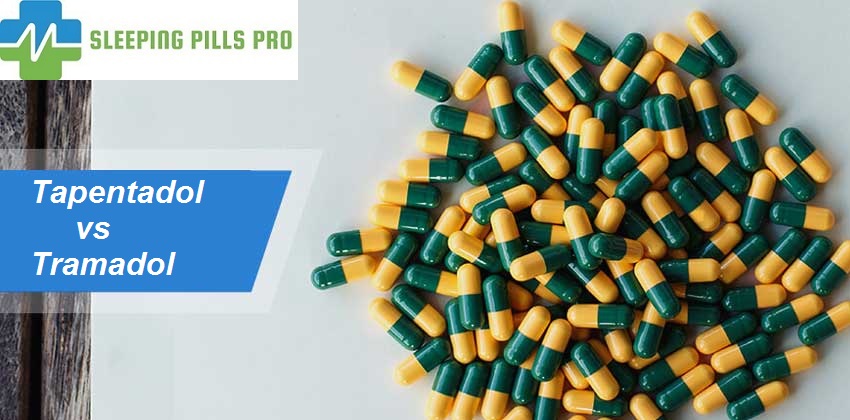Introduction
Tapentadol and tramadol are both prescription medications used to manage pain, but they differ significantly in their mechanisms, efficacy, and side effect profiles. Understanding these differences is crucial for selecting the appropriate treatment for various pain conditions. This article will provide a detailed comparative analysis of tapentadol vs. tramadol to help guide patients and healthcare professionals in making informed decisions about pain management.
Mechanisms of Action
Tapentadol is a newer opioid analgesic with a dual mechanism of action. It works by acting as a mu-opioid receptor agonist and also inhibits the reuptake of norepinephrine. This dual action helps in managing moderate to severe pain by not only targeting opioid receptors but also modulating norepinephrine levels, which can contribute to pain relief.
Tramadol, on the other hand, is a centrally acting analgesic with a more complex mechanism. It, too, works as a weak mu-opioid receptor agonist, but its basic course of action is via the inhibition of the reuptake of serotonin and norepinephrine in the central nervous system. This serotonergic effect differentiates tramadol from traditional opioids and contributes to its pain-relieving properties. Hence, while talking about Tapentadol vs. tramadol, both of these medications can work fine but tapentadol has a little advantage here as it is newer and slightly more effective but again, it is not advised to use it without expert’s guidance.
Efficacy and Indications
Buy Tapentadol is typically prescribed for moderate to severe pain, such as that experienced after surgery or from injury, and is often used for chronic pain conditions where a stronger analgesic is required. Its dual mechanism allows it to be effective in cases where other opioids might be used, but with potentially less risk of certain side effects due to its norepinephrine reuptake inhibition.
Tramadol is often used for moderate pain, including pain associated with osteoarthritis or other chronic conditions. It is considered less potent than tapentadol and may be preferred for patients who require less intense pain relief. Tramadol’s efficacy can vary among individuals, and it may not be suitable for more severe pain or conditions requiring strong analgesia.
Side Effect Profiles
Tapentadol shares some common opioid-related side effects, such as nausea, constipation, dizziness, and drowsiness. However, due to its norepinephrine reuptake inhibition, it may also cause additional effects such as increased blood pressure or anxiety. One advantage of tapentadol over other opioids is a potentially lower risk of inducing tolerance and dependence, although these risks are not eliminated.
Tramadol is generally associated with fewer opioid-like side effects due to its lower potency. Common side effects include nausea, dizziness, headache, and constipation. However, tramadol can also lead to serotonin syndrome, a serious condition caused by excessive serotonin levels, particularly when used in combination with other serotonergic drugs. Additionally, tramadol’s potential for dependence and withdrawal, though lower than that of traditional opioids, should be considered, especially with long-term use. Again in this tapentadol vs. tramadol, tapentadol has the edge here because of its low risk of dependence.
Risk of Abuse and Dependence
Tapentadol has a potential for abuse and dependence, similar to other opioids, though its norepinephrine reuptake inhibition may alter its abuse potential somewhat. It is classified as a Schedule II controlled substance in many countries, reflecting its significant risk for abuse and dependence.
Tramadol is often considered to have a lower risk of abuse compared to more potent opioids, leading to its classification as a Schedule IV controlled substance in the United States. However, this does not eliminate the risk entirely. Patients with a history of substance abuse or those taking tramadol in high doses or for prolonged periods should be monitored closely.
Drug Interactions
Tapentadol can interact with other central nervous system depressants, increasing the risk of sedation and respiratory depression. It should also be used cautiously with drugs that affect norepinephrine levels or those that could lead to serotonin syndrome when combined.
Tramadol is known to interact with a range of medications, including antidepressants, antiepileptics, and other opioids. Its serotonergic activity can lead to interactions that increase the risk of serotonin syndrome, particularly when combined with other serotonergic agents.
Conclusion
Both tapentadol and tramadol offer valuable options for pain management, with distinct mechanisms, efficacy levels, and side effect profiles. Tapentadol is generally used for more severe pain and has a higher potential for opioid-related side effects. Tramadol, while effective for moderate pain and associated with a lower risk of severe opioid-like side effects, carries risks related to serotonin syndrome and drug interactions. The choice between tapentadol and tramadol should be guided by the specific pain management needs, patient health status, and potential risk factors for side effects or drug interactions. Consulting with a healthcare provider is essential for tailoring pain treatment to individual requirements and ensuring safe and effective management.

